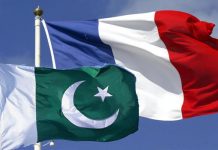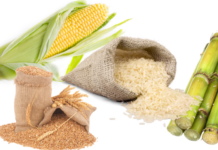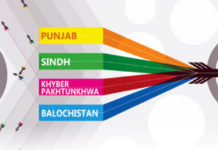Pakistan is staring at yet another economic crisis. A coalition government is facing economic choices that will significantly erode its political capital and must navigate an economic crisis that is a lot more complex than the one inherited by the PTI in 2018. This is the case for a whole host of reasons, but three external factors are worth paying closer attention to: the ongoing war in Ukraine, high commodity prices, and tightening global financial conditions. All three factors will make things significantly more challenging for Pakistan, meaning that policies must be biased towards worst-case scenarios in the coming days.
The ongoing war in the European continent is a seismic event in geopolitics. It will have a far greater impact on the international order than 9/11, which led to the invasion of Afghanistan and Iraq, and the beginning of the forever wars around the world. While these wars were in far off lands as far as the West was concerned, the ongoing conflict between Russia and Ukraine is closer to home. As a result, the European economy is facing uncertainty, with an increasing number of economists and market watchers warning of stagflation in Europe. What this means is that consumer demand in the European continent is expected to weaken in the coming months, leading to a reduction in the demand for consumer goods. As a result, it is likely that global exports to the European Union decline, and if this happens, then Pakistan’s exports to Europe are also going to face pressures.
The conflict, coupled with the ongoing reverberations of the coronavirus pandemic, means that global commodity prices are at elevated levels. In October 2018, when the PTI was beginning to navigate the crisis, oil prices peaked at $75 a barrel, declining to about $40 a barrel by December 2018, and then remained range-bound around $60 a barrel prior to the onset of the pandemic. Today, oil is north of $100 a barrel and the market is not easing up, despite the fact that lockdowns in China have led to concerns about economic growth. The Bloomberg Commodity Index, which was hovering around 80 prior to the onset of the pandemic, has skyrocketed to over 120, and prices of all sorts of commodities, much of which Pakistan imports, are at elevated levels.
Finally, the era of reach for yield, where dollars flowed to emerging and frontier markets for higher returns, is coming to an end. After peaking at about 3.2 percent in October 2018, the 10-year US treasury quickly declined to under 2 percent prior to the onset of the pandemic; it hovered around 0.5 percent during 2020 and remained below 1 percent through 2021. Today, the 10-year is on a steep upwards climb, crossing 2.5 percent over the last few days. This is reversing the flow of capital away from emerging and frontier markets back into developed markets, raising financial contagion risks across much of the Global South.
These three factors will make it that much more challenging for Pakistan to navigate the crisis the country finds itself in today. After experiencing almost 40 percent inflation in the last three and a half years, Pakistan’s ordinary citizens are facing even higher inflation in the coming weeks as the government adjusts fuel and electricity prices. Should Europe go into a recession, inflows of dollars through exports and remittances from the continent may decline as well, creating further risks for the external sector. A tighter global financial environment will make it that much harder – and more expensive – for Pakistan to borrow and fund its balance of payments needs. All this will occur at a time when Imran Khan is agitating on the streets and political parties are gearing up for elections.
To navigate this crisis, it is important for the new government to make timely and difficult choices, even if these erode the government’s political capital. Fuel and electricity prices must be adjusted upwards, monetary and fiscal policy needs to be tightened, and immediate expansion of the IMF program must be negotiated. At the same time, bilateral flows from strategic partners, especially Saudi Arabia and China, must be secured to stabilize the external sector. To ease the economic pain for the most marginal citizens, the BISP cash transfer program must be expanded, and a higher level of subsidies must be provided for public transport, as this will increase uptake of more efficient modes of transport.
In parallel, the government must prepare for what comes next after the crisis. For far too long, successive governments have kicked the can down the road, refusing to make tough decisions that reform the kleptocratic economy of Pakistan. An immediate focus must be placed on attracting more foreign direct investment. These flows are critical to not only fund current account deficits, but because they can promote increased productivity and global integration. There is no easy way out of this crisis and as much as the government may want to provide relief to improve its electoral chances, the fact of the matter is that there is no easy way out.























It will necessitate earlier elections or new
European continent is expected to weaken in the coming months, leading to a reduction in the demand for consumer goods. As a result, it is likely that global exports to the European Union decline, and if this happens, then Pakistan’s exports to Europe are also going to face pressures.